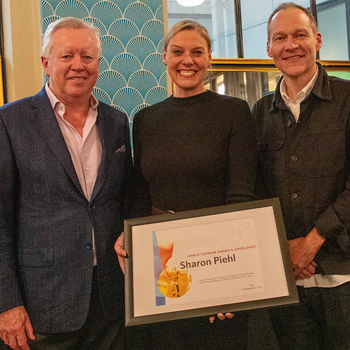Great minds don’t think alike
 Cognitive Diversity is a term that we’re hearing more and more about, not only in communications, but in various industries, across a variety of sectors. In their 2018 Trends Brief, Sparks and Honey identified “Cognitive Diversity” as an important ideological trend for the year.
Cognitive Diversity is a term that we’re hearing more and more about, not only in communications, but in various industries, across a variety of sectors. In their 2018 Trends Brief, Sparks and Honey identified “Cognitive Diversity” as an important ideological trend for the year.
The concept recommends bringing together people with different ways of thinking and distinctive working styles to create a debate and ultimately produce more creative ideas. Cognitive diversity is not predicted by factors such as gender, ethnicity, or age. It has been defined as differences in absorbing and interpreting new information, reacting to unfamiliar situations and approaching new and existing problems.
For years, corporations worldwide, but specifically in South Africa, have been focused on increasing diversity of race, gender and age; all of which are important in ensuring that we are equally representative and can speak to client and customer needs. However, we also need to take into account diversity of thought, which allows us to embrace new ideas and develop out-of-the-box solutions to client problems.
In any field of work, with client and management pressure, it is easy to become a victim of ‘group-think’. Teams can easily become echo chambers, getting the job done but making no real impact. A lack of thought diversity can see us being left behind as others embrace change, adopt new technologies, methods and processes.
One small way in which we can get out of the rut and use our different thinking styles to our teams and our client’s advantage, is to change how we brainstorm. Making the following adjustments to your brainstorm process can make all the difference.
- Include people with completely different interests
- Insights about coworkers, from hobbies to personal interests, can be useful when least expected.
- Select people from different teams around the office
- Colleagues that aren’t aware of past projects that your team has worked on are less likely to revert to ideas that they know client will like and rather present ideas that are new, bringing learnings from their own client campaigns.
- Choose people with different Myers–Briggs Type Indicator (MBTI) personality types
- The MBTI personality test allows us to identify our own specific preferences in the way we work and interact with other people. Conflict within the brainstorm team can be beneficial, it’s important that ideas are analysed and interrogated. Bringing together people with different personalities and ways of processing information will work against ‘group-think’.
In a 2017 study published in the Harvard Business Review, multiple teams with a diversity of “thinking styles” were assessed on how efficiently they completed a specific set of challenges. It was found that the teams with the greatest amount of cognitive diversity far outperformed the teams made up of similar “thinking styles”.
As such, in order to unlock maximum creativity and increase performance, we need to harness the unique thinking styles around us and embrace the unknown. That means adding new voices to the team.
Find Out More
-
Digital Insights Bulletin - October 2024
October 31, 2024
-
Sharon Piehl Wins 32nd Annual John D. Graham Award for Excellence
October 25, 2024
-
Digital Insights Bulletin - September 2024
September 30, 2024


